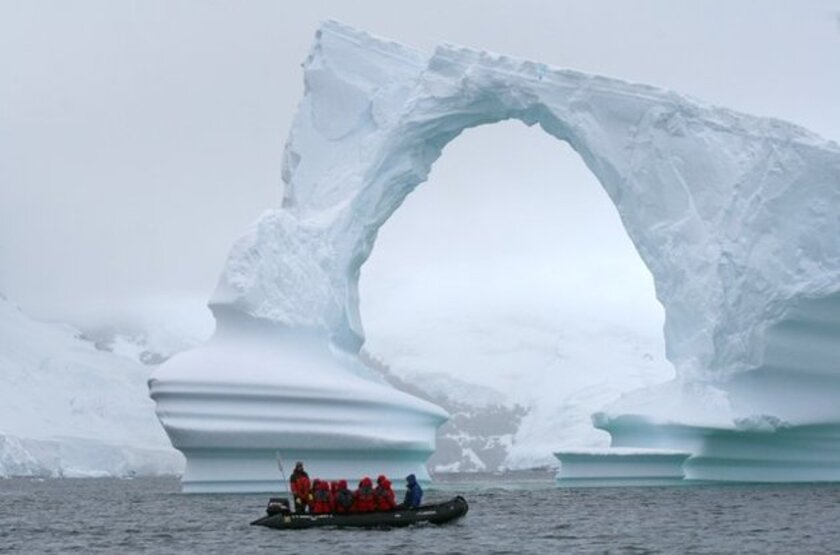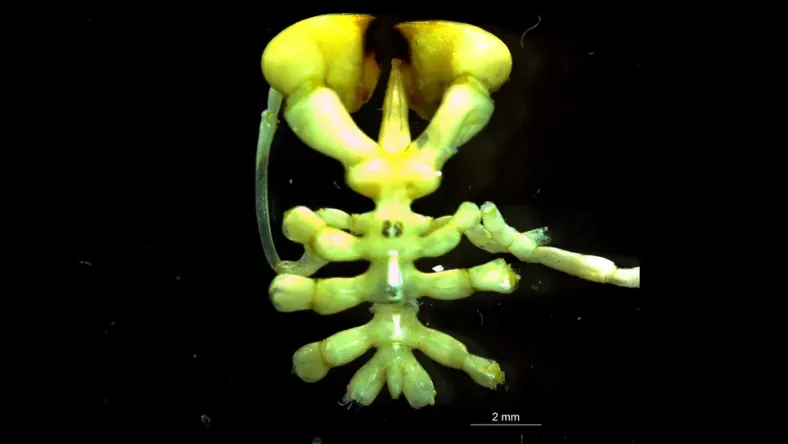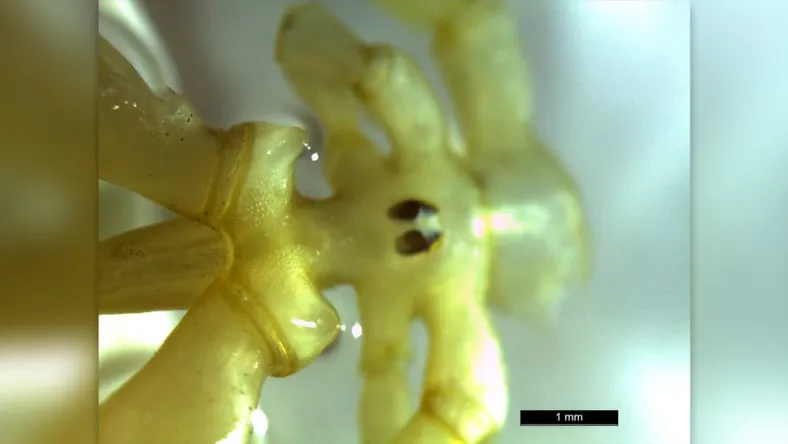
A strange yellow spider-like creature with four almost black eyes and large bulbous claws was pulled from the depths of the ocean near Antarctica.
The never-before-seen animal, a sea spider, is a distant relative of horseshoes and arachnids that live on the ocean floor, eat with a straw-like proboscis instead of a mouth, and breathe with their feet. Scientists have discovered more than 1000 species of sea spiders around the world.
The new species, Austropallene halanychi, was recovered from the ocean floor in the Ross Sea, about 570 meters below the surface. In addition to all the other amazing things about sea spiders, the new species has large claws that look like “boxing gloves,” which it presumably used to grab soft foods like anemones and worms, said study co-author Andrew Mahon, a biologist at Central Michigan University. Дослідження було опубліковано в журналі ZooKeys.

The body length of Austropallene halanychi is about 1 centimeter, but its legs stretch almost 3 cm. This gives the species a slender appearance typical of many sea spiders – although some species can grow much larger, reaching almost 60 cm in width.
What’s more, this new species is likely just a drop in the bucket when it comes to the undiscovered wildlife that lives on the bottom of the Southern Ocean – an ecosystem home to everything from brightly colored starfish and otherworldly sea worms to sponges and cold-water corals.
“The benthic environment in Antarctica is an area of science that we must continue to explore,” Mahon said. “There is so much there that every time we go, we find something new.”

To learn more about this environment, researchers drop nets deep underwater to pick up anything that might be on the bottom. After pulling up the nets, they sort everything they catch and store each sample before sending it back to the laboratories for further analysis.
But since there are so many potentially new species to describe, analyzing all the samples may take some time. A. Halanychi was first raised in 2013 by the American research vessel Nathaniel B. Palmer. Recently, Mahon and his colleague Jessica Zehnpfennig removed it from the vault and identified it as a new species to science by analyzing its body shape and genetics.
However, researchers may also lack time to explore the Antarctic seabed. As the climate is constantly changing, warm waters could threaten the future of some species living in this isolated and unique ecosystem, Mahon said. According to him, one of the reasons researchers continue to study the Antarctic floor is to help describe and protect this biodiversity before it’s too late.

